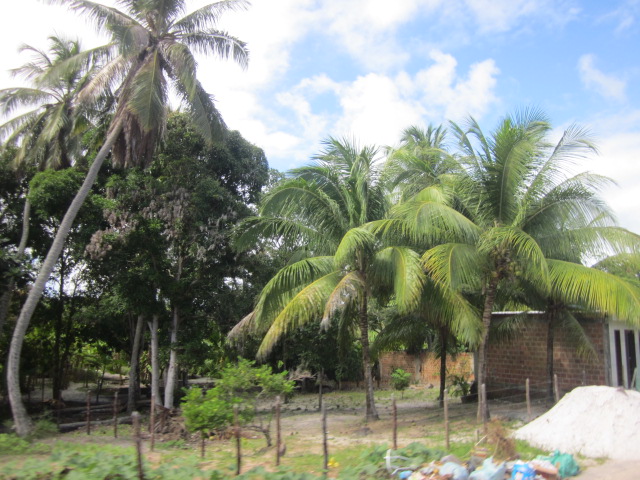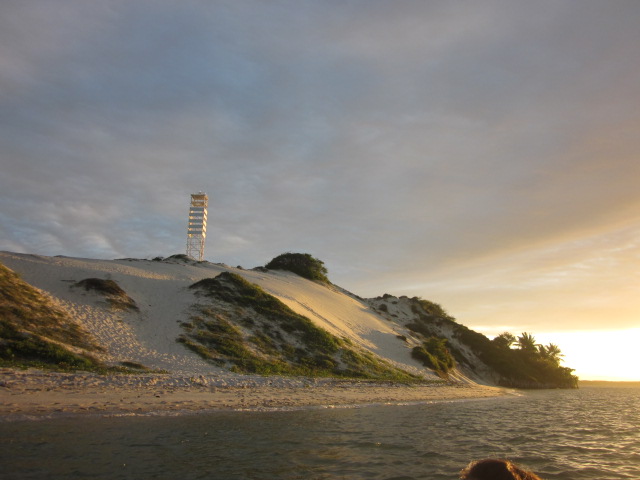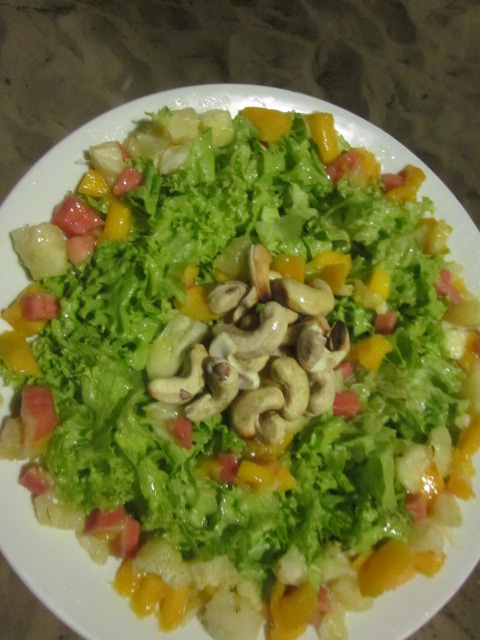
We had two options for getting to Mangue Seco. The first one entailed a 6am bus, and the second was an 11am bus. Given the general lack of sleep we’d been experiencing, we opted for the normal-time bus. Probably a good call because we still had to get up at 8:30am in order to even make it to the 11am bus. Unfortunately, it took nearly the entire day to get to Mangue Seco, only to arrive as the sun was setting, but it was all worth it.
Getting to Mangue Seco was not an easy task, as it entailed a bus, taxi, and boat to reach this secluded paradise. It was a bit fly-by-the-seat-of-our-pants, as we couldn’t reserve or pre-purchase bus tickets and instead had to buy them at the Rodoviaria (bus station). Fingers crossed that there was even a bus that operated on the schedule our pousada gave us, we thankfully got tickets through Linha Verde for the 11am bus that would take us up what was known as the “Coconut Coast,” an ecological highway lined with coconut palms and beaches. Thank goodness the view was beautiful the entire way, as the bus was very uncomfortable with no A/C and constantly made stops right outside of Salvador.


Once we were past the touristy beach spots near Salvador, we began to coast and the bus emptied out, so we finally got to sit next to an open window so we didn’t overheat. Even though our stop, Indiaroba, was only 200 miles north of Salvador, it took us a nice long 4.5 hours to finally arrive. And we weren’t at our final destination yet. From there, we took a 20 minute taxi to Pontal, a small port across the river from Mangue Seco. It was a bit of a funny situation – the bus driver spoke zero English and barked a number of instructions to us and another couple, who turned out to be from Switzerland. The man understood Portuguese and spoke French, which he used to relay to his French-speaking girlfriend. Meanwhile, I was getting a much better idea of what was going on by speaking to her in French, which I’d then translate into English for Doug. It took a while to get any message across the 4 of us, but it was an effective process!
Once in Pontal, we embarked on a small speedboat by rolling up our pants and wading through the water to reach the boat as there was no actual pier. We were treated to a beautiful view and setting sun as we made the 15-minute boat crossing, and upon reaching Mangue Seco, it was a quick walk to our pousada which was right on the river.




By this point, the sun was setting rapidly, so we decided to take a quick walk to just be able to say we saw something before we were confined to the pousada. Being that Mangue Seco is car-free and even devoid of sidewalks, there was no way to get anywhere except by foot, and with no “street” lights, it wasn’t practical to wander around once darkness set. The village was comprised of literally 3-4 pousadas, a short beach trail that opened to the ocean, and nothing else. Not even a town center or any freestanding restaurants. What initially drew me to Mangue Seco were the sand dunes on the beach, which I really wanted to visit during our trip to Brazil. Unlike some of the more famed sand dunes of the north, Mangue Seco was a very secluded area along the Bahia-Sergipe state borders, where the river opens up into the ocean. It was so little known that it was nearly impossible to find anything about it in my searches – as information was minimal online and nonexistent in guide books.
We caught the tail end of the sunset over the dunes, which was a sensational site, and with not many options left once it got dark, we used the evening to relax in the hammock on our patio with some beers. Since dinner options were limited if not nonexistent, we ate at the restaurant at our pousada which was situated right on the beach. The food was surprisingly good and fresh, and since we had nowhere else we needed (or could) be, we most certainly enjoyed a handful of Skols (local beer, not tobacco), caipirinhas, and pineapple caipifrutas (cachaca muddled with cane sugar and a tropical fruit of our choice), right on the beach.








HOW WE DID IT:
Transportation to Mangue Seco: nothing could be booked ahead of time, so we took a taxi to the bus station in Salvador (R40/$13) to take one of the limited buses that morning to Pontal. There were two bus lines that could work: Linha Verde bus to Indiaroba or Bomfim bus line to Estancia. We took Linha Verde (R70/$23 per ticket) because it left at a more manageable time, but it also took much longer with its many local stops. From the Indiaroba bus station, we took a local taxi to Pontal (R20/$6.50) where we paid a local R20 (can be negotiated and better to do with others) to take us on the 15-minute river crossing. All in all, it took a little under 5.5 hours.
Stayed at the Pousada O Forte, which despite being a no-frills establishment, was probably the nicest lodge we could’ve stayed at in town. The town isn’t fancy as it’s a natural preserved site so the focus was certainly on outdoor adventures (most certainly a step up from the Amazon I might add!).